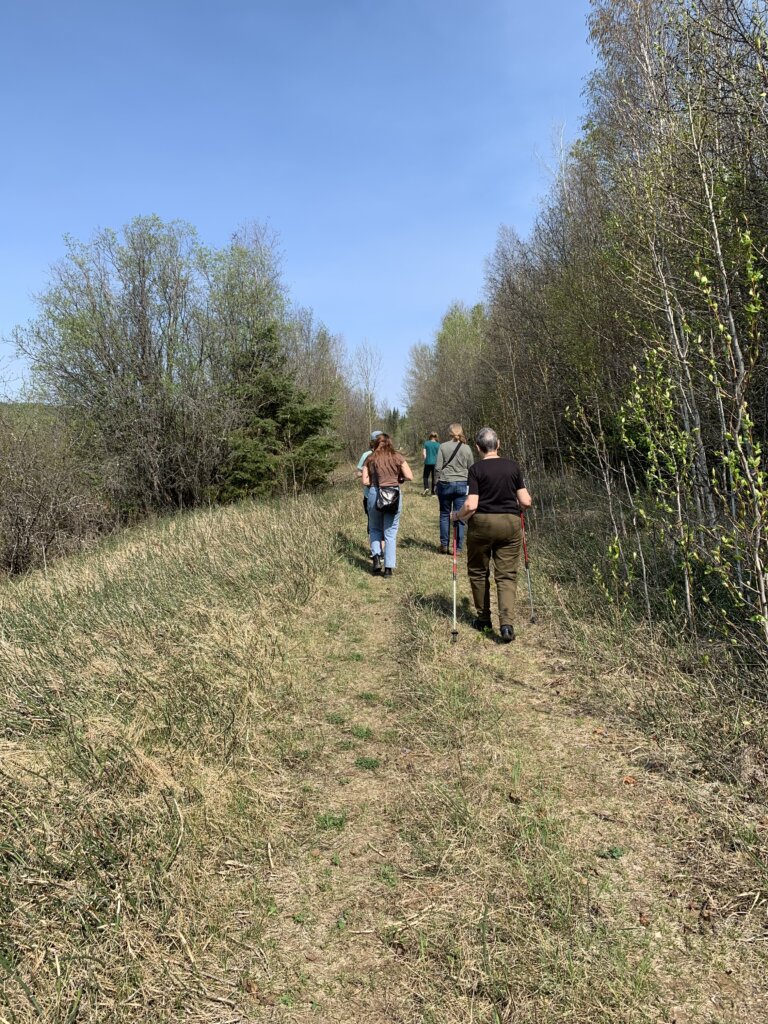Tawatinaw Watershed Working Group: Local Environmental Stewardship
AWC-WPAC, Events, Project Update, and Watershed Issues | July 2023
Kailyn Gibbons, Watershed Science Technician
Learning about the vast expanse of the Athabasca Watershed has been amazing to me. Since I started my work with the Athabasca Watershed Council, I have been doing a lot of learning and researching about shorelines (riparian zone) in the Athabasca Watershed and their importance to the people and ecosystems in the area. I grew up in the City of Edmonton and while I enjoyed camping and escapes to the various natural areas of Alberta, I didn’t have a sense of the importance of these areas to people living there. Getting to look deeper into reports and articles about the riparian areas and restoration efforts by organizations within the watershed and dive into learning about the benefits that a healthy riparian zone can bring has given me a better understanding of why these efforts are important. The water of lakes, rivers, and streams connects different land users from agricultural producers to lakeshore property owners and from recreation activities to ecosystems, and all of them depend on healthy shorelines to contribute to clean and usable water resources.
Reports and studies can give a lot of information about similar projects or problems encountered that are related to the shoreline health in the Athabasca Watershed, but there is something to be said for lived experience. The people who depend on the water and who live with problems specific to their land and community are some of the most important people to consult with. They have the best understanding of the needs of watershed shorelines and are important sources to inform organizations like the Athabasca Watershed Council on how to support their conservation activities. Earlier this summer, I attended a meeting of the Tawatinaw Watershed Working Group, and the input of this group is so beneficial. This group brings together landowners, community organizations, and nature lovers to meet and discuss ongoing projects surrounding the Tawatinaw watershed. The Tawatinaw Watershed begins at Helliwell Lake before flowing north to meet the Athabasca River at the Town of Athabasca.

The Working Group meeting I attended began with a nature walk, enjoying identifying all the different native plant species in the area and I got to learn about different birds that call the watershed home. After the beautiful walk, we sat down, and I got to hear about the different projects going on and the ways each stakeholder in the area is working together for conservation and restoration efforts. I even got to speak about my own work with creating shoreline information packages to distribute to different landowners and I received feedback on things they thought were important to add and ways to reach out to people that would best help the restoration of shorelines in the Tawatinaw area.

We also discussed an upcoming project of the Athabasca Watershed Council that I will be working on, which looks into how watercourse crossings might be affecting the Tawatinaw River. Mark Spafford identified in 2011 that watercourse crossings could negatively impact the Tawatinaw watershed in his study. I am excited to better understand the ways these crossings affect the connectivity of the landscape and how we can support the conservation and improvement of the Tawatinaw River to the benefit of all who depend on it. In the upcoming months of the summer, I look forward to learning more about the watershed and its importance to the people and animals who rely on it, and I look forward to building my knowledge and appreciation for the area.

